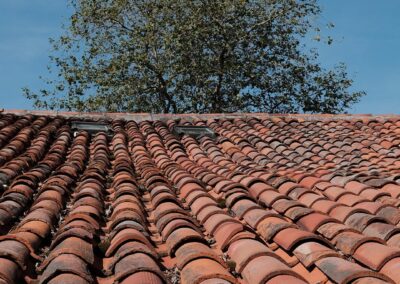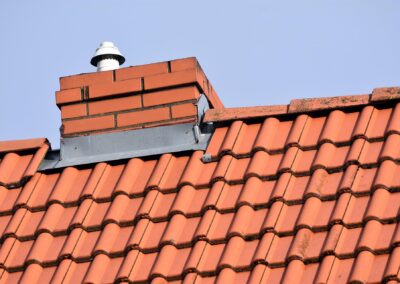What Is The Best Time To Reroof A House
There are a few things to consider when answering this question. The first is the climate. If you live in an area with a lot of rainfall, it’s best to wait until the rainy season is over before starting your project. Otherwise, you risk having your roof leak and causing extensive damage to your home.
The second thing to consider is the type of roof you have. If you have a shingled roof, it’s best to wait until spring or summer to reroof. This is because shingles can absorb moisture, which can cause them to warp and crack over time. However, if you have a metal roof, you can usually reroof any time of year.
Finally, it’s important to consider the cost of reroofing. If you have a tight budget, it’s best to wait until the off-season to get the best deals on labour and materials. However, if you’re not worried about cost, you can usually start your project any time of year.
In general, the best time to reroof a house is either in the spring or fall. This is because the weather is typically milder during these times of year, which helps to minimise the risk of damage to your roof. However, if you live in an area with a lot of rainfall, it’s best to wait until the rainy season is over before starting your project. Otherwise, you risk having your roof leak and causing extensive damage to your home.
If you’re not sure when the best time to reroof your house is, you can always consult with a professional roofing contractor. They will be able to give you specific advice based on the type of roof you have and the climate in your area.
Do Roofers Work In The Winter Months?
There’s no denying that winter can be a tough time of year for just about everyone – including roofers. Many people assume that roofing is a seasonal job, with most work happening in the spring and summer months. However, there are plenty of roofing projects that need to be completed in the winter as well. So, the answer to the question “do roofers work in the winter?” is a resounding yes!
There are a few things to keep in mind if you decide to have roofing work done during the winter. First, it’s important to make sure that your roof is in good condition before the cold weather sets in. This means getting any necessary repairs done and ensuring that there is no damage from autumn leaves or debris. Once your roof is ready for winter, experienced roofers will be able to work around the challenges posed by snow and ice.
If you live in an area where snow and ice are common during winter, it’s important to choose a roofer who is experienced in working in these conditions. They will know how to safely and efficiently work on your roof, regardless of the weather. It’s also a good idea to ask for references from previous customers who have had work done by the roofer in question during winter. This will give you an idea of their reliability and level of experience.
When it comes to roofing materials, some are better suited to winter weather than others. For example, asphalt shingles are less likely to crack in cold weather than other types of roofing material.
In most cases, roofing work can be carried out during the winter months without any problems. However, it’s important to be aware of the potential risks and take steps to minimise them. For example, if you’re planning to have new shingles installed, make sure the roofer starts work early in the day so that the shingles have time to adjust to the temperature before nightfall.
If you have any concerns about having roofing work done during winter, talk to a professional roofer for advice. They will be able to assess the risks and give you guidance on how to proceed.
How Cold Can It Be To Replace The Roof?
If you live in an area that experiences extremely cold weather, you may be wondering if it’s possible to replace your roof during the winter months. While it’s certainly possible to replace a roof in cold weather, there are a few things to keep in mind before scheduling your project.
One of the biggest deciding factors in whether or not you need a new roof is the temperature. Believe it or not, the temperature plays a big role in how well your roof will hold up. In general, roofs are designed to withstand temperatures between 20-60 degrees Fahrenheit. However, there are some roofs that can handle colder temperatures.
It’s important to make sure that the temperature is not too cold, as this can cause problems with the materials used for your roof. In general, most roofing materials should be installed when the temperature is above freezing. If the temperature is below freezing, it’s important to take measures to prevent the materials from freezing, such as using heat lamps or keeping them in a heated room.

It’s also important to be aware of the wind chill factor when replacing a roof in cold weather. The wind can make it feel much colder than the actual temperature, so be sure to dress appropriately and take breaks often to avoid hypothermia.
Finally, it’s important to have a plan in place for dealing with any snow or ice that may accumulate on your roof during the project. It’s best to have this plan in place before starting the project, as trying to deal with these issues while working on the roof can be very dangerous.
If you’re considering replacing your roof during the winter months, keep these things in mind to ensure a safe and successful project. If you have any questions about installing a new roof during the winter, be sure to ask your roofing contractor for advice.
What Is Roof Felting?
Roof felting is a process of creating a water-resistant layer on the roof. This is done by using a special type of felt material that is laid over the surface of the roof. The felt helps to protect the roof from water damage and also provides an extra layer of insulation. Roof felting is often used in conjunction with other roofing materials such as shingles or tiles.
There are two main types of roof felting: synthetic and organic. Synthetic felts are made from man-made materials such as polyester or fibreglass, while organic felts are made from natural materials such as wool or cotton. Each type of felt has its own advantages and disadvantages.
Synthetic felts are more durable and less likely to rot or mildew than organic felts. They are also easier to install and require less maintenance. However, synthetic felts are more expensive than organic felts and may not be as effective at insulating your home.
Organic felts are made from natural materials that allow them to breathe. This helps to prevent condensation and mould growth. Organic felts are also more environmentally friendly than synthetic felts. However, they are not as durable as synthetic felts and may need to be replaced more often.
No matter which type of roofing you choose, it is important to make sure that it is installed properly. Improper installation can void the warranty on the felt and lead to leaks and other problems. Be sure to hire a qualified roofing contractor to install your roofing felt.








